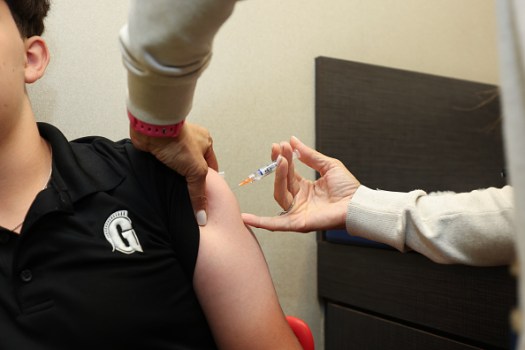
As the federal shutdown continues, states are grappling with significant gaps in health data just as the respiratory illness season begins. The shutdown has suspended critical dashboards and expert analysis from the Centers for Disease Control and Prevention (CDC), which monitors indicators such as wastewater to provide early warnings of the spread of COVID-19, influenza, RSV (respiratory syncytial virus), and other infectious diseases.
The lack of federal oversight means that states are left to rely on their own resources to identify disease outbreaks, a situation that could endanger lives as vaccination rates for children decline. Increased exemptions and hesitancy driven by misinformation are compounding the issue, leaving state and local officials with limited data to combat outbreaks effectively.
Dr. John T. Brooks, a former chief medical officer for the CDC’s Emergency COVID-19 Response, emphasized the importance of wastewater monitoring. He noted, “This is one more piece of information to each American citizen to inform their decision, like, ‘Do I want to get vaccinated, and is now the time?’” Brooks explained that early detection helps protect communities by raising awareness about hygiene and the need for vaccinations.
Ericka McGowan, senior director for emerging infectious disease at the Association of State and Territorial Health Officials, warned that the absence of CDC involvement could lead to major issues if states miss critical data. Typically, states and localities gather their own health information but depend on the CDC for comprehensive analysis and public dissemination.
In Washington state, for example, the wastewater surveillance program relies on the CDC’s dashboards to inform the public. With the shutdown, only state officials have access to this information, and they may need to reconsider their data-sharing systems if the situation persists.
Caitlin Rivers, an associate professor at Johns Hopkins University, conducted a review of all 50 states and identified data issues stemming from the shutdown. She described the current state of affairs as “DIY surveillance,” with states like Georgia having to pause their influenza reports due to missing CDC data. Nevertheless, health officials in Georgia are working on a version that utilizes only state information, according to Nancy Nydam, a spokesperson for the Georgia Department of Public Health.
While Georgia has its own data on emergency room visits indicating a decline in suspected COVID-19, flu, and RSV cases, some states are heavily reliant on CDC data for comprehensive surveillance. Michael Hoerger, an associate professor at Tulane University, noted that his state-by-state wastewater reports on COVID-19 have been halted due to the lack of CDC data. He remarked, “The pause means that we won’t have a good sense of which states are dealing with elevated transmission until the data come back online.”
Despite these setbacks, some states like Texas have maintained their data surveillance during the shutdown. A representative from the Texas health department stated, “We do our own surveillance for most metrics.” However, they are no longer receiving information on new COVID-19 and RSV deaths from the federal government.
North Carolina, which also collects its own wastewater data, typically benefits from CDC guidance and analysis. The current shutdown has disrupted these processes, leaving local health departments without critical support. McGowan pointed out, “Even if you collect the data, you still have to have someone who is an expert to analyze that data to give you some kind of result.”
Rivers highlighted concerning trends in her review, noting that more young children—who are particularly vulnerable to RSV—are visiting emergency rooms in states like Louisiana, South Carolina, Texas, and Virginia. This increase in hospitalizations adds urgency to the need for reliable health data.
As the respiratory illness season unfolds, the implications of the federal shutdown on public health data are becoming increasingly apparent. The reliance on state-level resources and the absence of coordinated federal oversight could hinder effective responses to emerging health threats.






